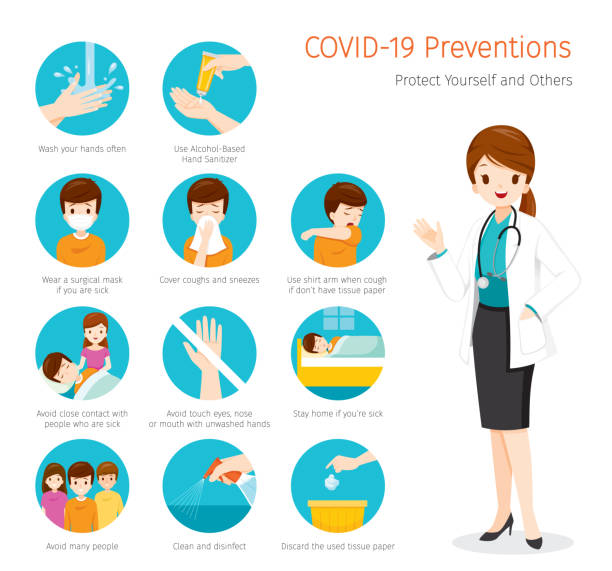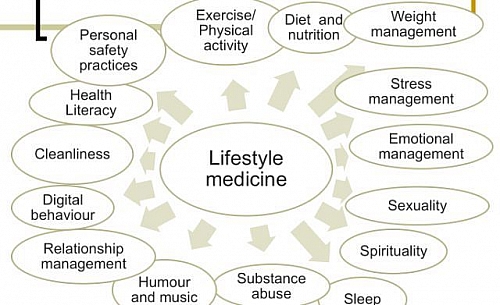
The Department of Health and Human Services and the Department of Agriculture are currently updating the Dietary Guidelines. These guidelines offer scientifically sound advice about how to eat healthy and prevent chronic diseases. These guidelines also have an impact on the development of Federal government food programs. They also guide the development, labeling and nutrition education of America's food programs. The guidelines apply to the general public, people with chronic diseases, and people with special nutritional needs.
The Dietary Guidelines are based on the best available scientific evidence. The Dietary Guidelines are updated on a regular basis and checked for accuracy. Participants in the development process include nutrition scientists, epidemiologists, or other experts. The Dietary Guidelines Advisory Committee is then responsible for reviewing the guidelines. To make these recommendations practical, the committee uses national data sets.
In developing dietary guidelines, there are many factors to consider, such as the health effects of food or beverages, environmental concerns, preservation of traditional cuisines, and how they affect your health. Increasing consumption of foods high in saturated fat, refined carbohydrates, and added sugars has a profound impact on the body. Dietary guidelines recommend that sugar consumption be reduced and that you eat more fruits and veggies. They also recommend eating more whole grains and low-fat dairy products.

The dietary guidelines are designed for a range of audiences including nutrition educators, health professionals and general public. They give guidance on dietary choices, food labeling, and other matters that can be used to meet the nutritional needs. These guidelines should also offer policies for sustainable long-term healthy diets.
A new edition of the guidelines is released every five years. These guidelines are regularly updated to reflect current science and promote health and prevent chronic disease. These guidelines are made available as a resource to public health professionals as well as policy makers. Among the most important recommendations are to limit added sugars and salt, increase physical activity, and consume a variety of fruits and vegetables. They are also designed to lower the likelihood of chronic diseases like cardiovascular disease and type 2.
The Dietary Guidelines Advisory Committee meets six time to review scientific evidence regarding specific topics. It submits its report to HHS. The latest report by the committee was published February. The Dietary Guidelines Advisory Committee consists of 11 to 15 experts. These experts assist in reviewing the latest scientific evidence and making recommendations.
The process of developing Dietary Guidelines took several years. HHS invites the public to comment on the scientific questions. These comments help determine which scientific questions will be addressed in the final dietary guidelines.

The Dietary Guidelines have evolved over the years to include changes in science as well public health and best practice in scientific review. USDA and HHS made major changes recently to make the guidelines more transparent and increase public participation.
FAQ
Is being cold good for your immune system.
Cold weather can cause a decline in your immune system. Your body makes less white blood cell to fight infection. However, being cold also makes you feel better because your body releases endorphins into your brain which reduce pain.
What is the difference between a calorie or a kilocalorie.
Calories are units used to measure the amount of energy in food. Calories is the unit of measurement. One calorie represents the energy required to raise one gram of water's temperature by one degree Celsius.
Kilocalories is another name for calories. Kilocalories equal one thousandth of an calorie. 1000 calories, for example, equals one kilocalorie.
Does being cold give you a weak immune system?
It's been said that there are two kinds of people in the world; those who love winter and those who hate it. But whether you love or hate it, you may find yourself wondering why you feel so lousy when it's cold out.
The answer lies in the fact that our bodies are designed to function best during warm weather. We evolved to thrive in hot environments because of the abundance of food resources.
We live in a very different environment than our ancestors. We spend a lot more time indoors, and are more likely to be exposed to extreme temperatures like heat and cold.
As a result, our bodies aren't used to such extremes anymore. It means that when we do go outdoors, our bodies feel tired, sluggish even sick.
These effects can be reversed, however. You can combat these effects by making sure you are well-hydrated all day. If you drink plenty of water, you'll help keep your body properly hydrated and flush toxins from your system.
Another important step is to ensure that you're eating healthy meals. Your body will stay at its best when you eat healthy foods. This is especially helpful for people who spend a lot of time indoors.
Finally, consider taking a few minutes each morning to meditate. Meditation can relax your mind and body which can make it easier to deal stress and illness.
What are the ten best foods to eat in America?
These are the 10 best foods you can eat:
-
Avocados
-
Berries
-
Broccoli
-
Cauliflower
-
Eggs
-
Fish
-
Grains
-
Nuts
-
Oats
-
Salmon
Exercise: Good or Bad for Immunity?
Exercise is good exercise for your immune system. Exercise boosts the production of white blood cells in your body that fight infections. You also eliminate toxins. Exercise is a great way to prevent diseases such as cancer and heart disease. It reduces stress.
Exercising too often can cause your immune system to be weaker. You can cause muscle soreness by working out too hard. This causes inflammation and swelling. The body will then produce more antibodies to fight infection. These extra antibodies can lead to allergies or autoimmune disorders.
So, don't overdo it!
Statistics
- According to the Physical Activity Guidelines for Americans, we should strive for at least 150 minutes of moderate intensity activity each week (54Trusted Source Smoking, harmful use of drugs, and alcohol abuse can all seriously negatively affect your health. (healthline.com)
- Extra virgin olive oil may benefit heart health, as people who consume it have a lower risk for dying from heart attacks and strokes according to some evidence (57Trusted Source (healthline.com)
- The Dietary Guidelines for Americans recommend keeping added sugar intake below 10% of your daily calorie intake, while the World Health Organization recommends slashing added sugars to 5% or less of your daily calories for optimal health (59Trusted (healthline.com)
- This article received 11 testimonials and 86% of readers who voted found it helpful, earning it our reader-approved status. (wikihow.com)
External Links
How To
What does the meaning of "vitamin?"
Vitamins are organic compounds found naturally in food. Vitamins help us absorb nutrients from foods we eat. Vitamins are not made by the body, so they must be obtained through food.
There are two types of vitamins: water soluble and fat soluble. Water-soluble vitamins dissolve readily in water. Some examples include vitamin C,B1 and B2 vitamins (thiamine), B2 and riboflavin, B3 and niacin, B6 vitamins (pyridoxine), B6 vitamins (niacin), folic acids, biotin, pantothenic acids, and Choline. The liver and fat soluble vitamins are stored in fatty tissue. Vitamin D, E, K and A are some examples.
Vitamins can be classified by their biological activity. There are eight major types of vitamins.
-
A - essential for normal growth and maintenance of health.
-
C - vital for nerve function and energy generation
-
D - necessary for healthy bones and teeth.
-
E - Required for good vision, reproduction.
-
K - Essential for healthy muscles and nerves.
-
P – vital for building strong bones.
-
Q – aids digestion and absorption.
-
R - Required for red blood cell production
The recommended daily allowance of vitamins (RDA), varies depending upon age, gender, physical condition, and other factors. The U.S. Food and Drug Administration (FDA) sets the RDA values.
For adults 19 years and over, the RDA vitamin A intake is 400mg/day. For fetal development, pregnant women require 600 micrograms per daily. Children ages 1-8 require 900 micrograms per day. Infants under one year of age require 700 micrograms per day, but this amount decreases to 500 micrograms per day between 9 months and 12 months of age.
Children aged between 1-18 years old who are obese require 800 micrograms per Day, while overweight children need 1000 micrograms every day. Children underweight or obese will require 1200 micrograms a day to meet their nutritional requirements.
Children 4-8 years old with anemia will need 2200 mg of vitamin D daily.
2000 micrograms daily is required for adults over 50 to maintain their general health. Because of their higher nutrient needs, women who are pregnant or nursing need 3000 mg per day.
Adults over 70 need 1500 micrograms daily, since they lose around 10% of their muscle mass every decade.
Women who have been pregnant or are lactating require more than the RDA. Pregnant and breastfeeding women require 4000 micrograms each day during pregnancy and 2500 Micrograms each day after birth. Breastfeeding moms need 5000 micrograms per daily when breastmilk production occurs.